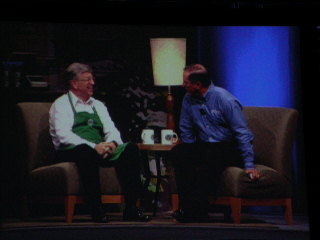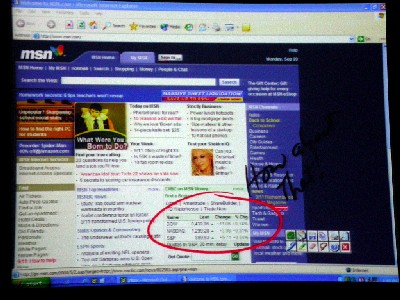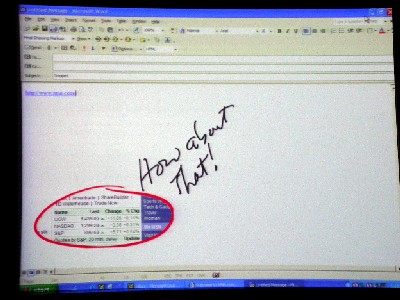
Original Link: https://www.anandtech.com/show/987
Intel Developer Forum Fall 2002 - Day 1: May the show begin
by Anand Lal Shimpi on September 9, 2002 8:52 PM EST- Posted in
- Trade Shows
Today marks the opening of the 12th Intel Developer Forum; for six years Intel has been putting on these developer forums but they have attracted much more than a simple software crowd. IDF has become a place for the AnandTech Community to get a look into Intel’s world and it has historically been a place for many interesting announcements.
At past IDFs we have seen technologies such as NetBurst and Hyper-Threading unveiled not to mention the clock speed barriers have been consistently broken at IDF; just six months ago we were shown a 4GHz Pentium 4 processor and today is looking to surpass that demonstration as well.
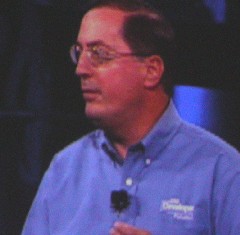
Today’s keynote started at 1PM PST, which is quite common for the first day of IDF. The day usually starts later than normal, either that or is moved to the Tuesday of IDF week. The keynote was given by Paul Otellini, President and COO of Intel; unfortunately the keynote started off on a relatively slow note with most of the material being a regurgitation of past IDFs.
Although the latter part of the presentation held some interesting demos from Intel, the majority of the presentation was stolen by Microsoft with some interesting demos of their Windows XP Tablet PC Edition. Much of Intel’s presentations were ridden with too much satirical propaganda and not enough meat unfortunately; even a normally energetic Pat Gelsinger seemed to be unenthused during his introduction, maybe it was just because he wasn’t talking about his usually very interesting engineering topics. Hopefully things will get better as the week goes on.
Orin Smith, CEO of Starbucks stopped by to serve coffee and talk about 802.11
in Starbucks coffee houses.
Intel’s major announcements included the opening of a software college to train developers in optimizing for the next-generation of multithreaded/multicore CPUs as well as a ~500M transistor count for the Madison Itanium 2 core.
Banias Notebooks Galore
Quite possibly the most interesting mobile CPU is the forthcoming Banias processor from Intel. Designed by Intel’s microprocessor architecture group out of Israel, the Banias project was picked up immediately following the cancellation of Timna – Intel’s first system on a chip design.
Banias is specifically tailored for mobile operation with low power consumption and long battery life two of its major selling points; very little is known about the CPU itself other than it will boast a very P3-like architecture with a much higher bandwidth FSB (NetBurst derived?). We’re going to be getting some more information on Banias over the next few days so hopefully we’ll be able to shed a little more light on the architecture side of things.
The CPU is still scheduled for an introduction in the first quarter of next year and Intel had a number of OEM systems during their keynote including Dell and Gateway:
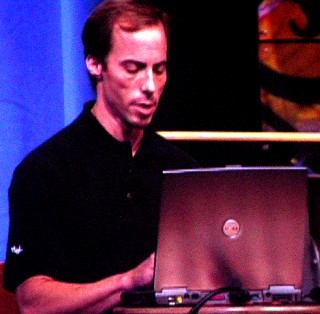
Dell's Banias Notebook
The Intel reps demonstrating the Banias platforms also alluded to both 802.11a and 802.11b support enabled through Banias. The Banias chipset, Odem, will support 802.11 through its Memory Controller Hub (MCH – aka North Bridge) and judging by what we saw today you can probably expect support for both 802.11a and 802.11b depending on what the OEMs build on the board itself. Remember that only the 802.11 MAC is integrated into the chipset thus leaving the physical layer outside of the MCH.
Intel Pentium 4 @ 4.7GHz
In the usual Intel style there was an overclocked Pentium 4 running behind the stage during the keynote.
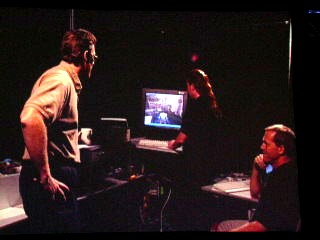
We were walked backstage via camera to see Intel running the 0.13-micron Northwood based Pentium 4 reliably at 4.1GHz. The testers then decided to increase the clock speed of the processor, on the fly, as far as it would go before crashing.
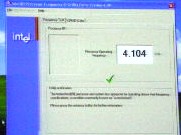 |
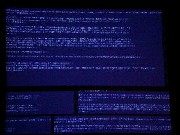 |
Intel’s processor identification utility read 4.684GHz before the system crashed under Windows XP.
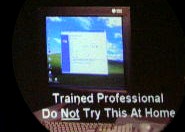
As usual, the CPU was supercooled with the actual type of super cooling left up to our imagination (you can expect a vapor phase refrigeration style of cooling).
Hyper-Threading on the Desktop by Q4
Just as expected, Intel officially announced that Hyper-Threading would be brought to the Pentium 4 processor by the end of this year. Putting two and two together it’s easy to conclude that the technology will be introduced with Intel’s P4 release at the end of this year at 3.06GHz.
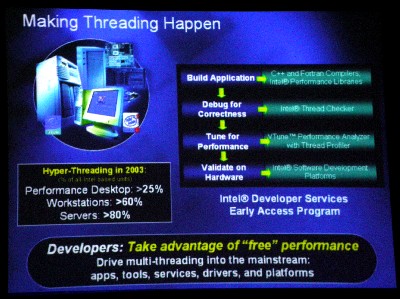
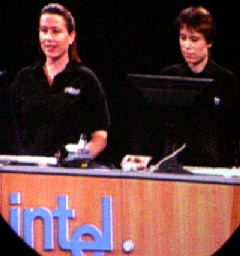
Intel did demonstrate some scenarios in which Hyper-Threading improved performance including the following:
Recording live TV (using ATI’s AIW Radeon) while playing Asheron’s Call 2 Beta:
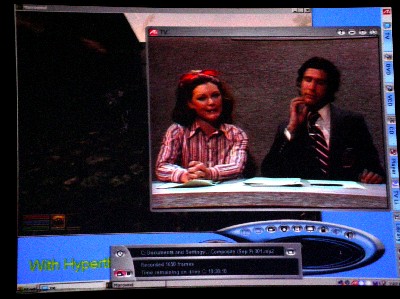
Excel running while cleaning out an Outlook inbox:
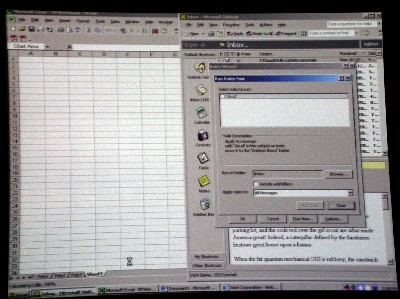
Scanning for viruses while opening a Power Point presentation:
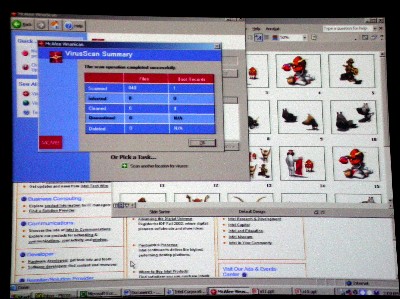
Playing back video from a DV camera while encoding it to MPEG-4 on the fly (no audio):
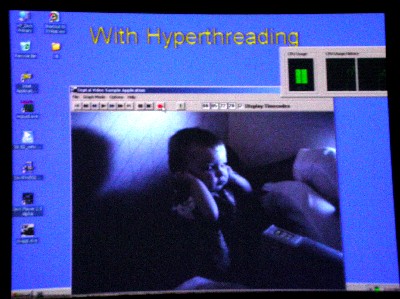
In all four of the above cases, performance was improved on the Hyper-Threading enabled Pentium 4 system over the same system without HT enabled; both systems were identically configured and running at 3.06GHz. Unfortunately what Intel’s demonstration did not characterize is the performance hit that occurs under other situations which can be addressed using some of the methods we outlined in our IDF preview earlier today.
Hyper-Threading is a technology that won’t show its benefits immediately and might end up being left disabled on most desktop systems initially but in the long run it has a great deal of potential for Intel CPUs.
LaGrande – Intel Provides Palladium Support
Intel also announced their LaGrande initiative which will bring hardware level security support that could work with Microsoft’s Palladium. There wasn’t much revealed about LaGrande (a codename for the forthcoming productized features) other than it will be implemented through a series of CPU and chipset extensions; this lead us to believe that some of Prescott’s new instructions could be LaGrande related but we have yet to confirm that.
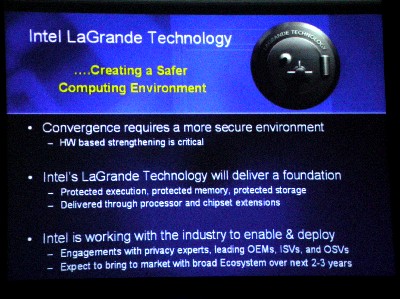
Microsoft Steals the Show
Jim Allchin, Group VP of Microsoft’s Platforms division breathed life into the presentation with his demonstration of Windows XP Tablet PC Edition. The first Tablet PC devices will be available over the next several months and Allchin was able to demonstrate some of the compelling features of the OS.
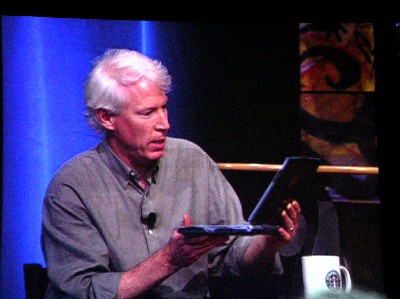
As we’ve mentioned in our review of PaceBook’s PaceBlade tablet, one of the hardware requirements for Tablet PC is that the screen should be electromagnetic and thus provides much more flexibility. An example is the ability to apply varying amounts of pressure to the screen in order to get different line thicknesses:
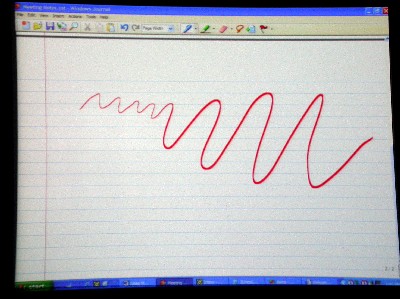
Handwriting recognition seemed to work very well during Allchin’s demonstration as he added text to an existing Word document as well as in a Visual Basic program. The level of integration of Microsoft’s handwriting recognition will definitely secure its success at the expense of other companies in the handwriting recognition field of course.
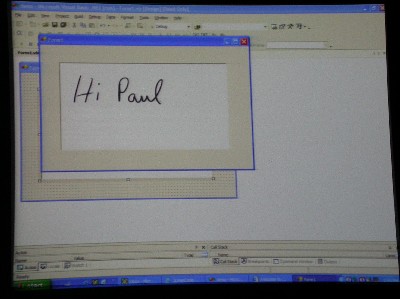
A very cool feature of the OS is the Snippet tool; if you’ve ever wanted to send someone a part of a web page or circle something like you would a magazine for a friend to read, Snippet is exactly what you’ve been waiting for.
Allchin demonstrated the usefulness of Snippet (bundled free with XP Tablet PC Edition) by going to MSN.com and circling a part of the front page that he wanted to send to a friend.
Clicking on the Snippet button captures a picture of the circled area and allows you to paste it into an email in Outlook as you can see below:
All of this was accomplished in three clicks of the pen, not too shabby at all.
Another cool feature of these Tablet PCs is that if you use the other side of the stylus the OS will go into erase mode and you’ll be able to erase things you’ve written – much like a regular pencil.
Windows XP Media Center Edition
In the coming months Microsoft will release Windows XP Media Center Edition, also part of the presentation today.
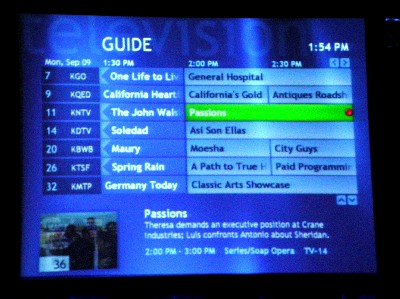
The Media Center Edition of Windows XP will finally provide the front end to PC based personal video recorders. If you’ve noticed, one of the biggest limitations to the acceptance of things like ATI’s All-in-Wonder Radeon as a Tivo replacement has been the interface. It is much easier to click a few buttons on your Tivo remote than it is to fumble around with a Start Menu, even if you have ATI’s Remote Wonder.
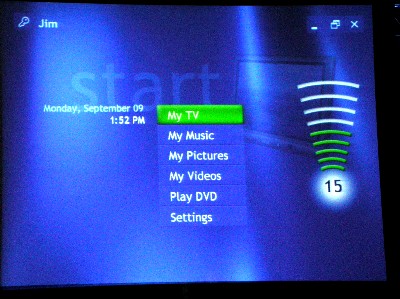
The Media Center Edition of Windows XP alleviates this problem by providing a very user friendly front end to the XP Professional OS. The beauty of the Media Center edition is that you can continue to use the OS just as you would Windows XP Professional but you can drop into the Media Center interface whenever you’d like.
Itanium 2
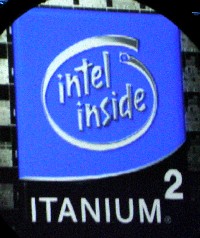 Intel
finished off the keynote with a quick demonstration of Madison, the ~500 million
transistor 0.13-micron successor to Itanium 2. The extremely high transistor
count of Madison comes from its on-die 6MB L3 cache; in another year we’ll
probably be hearing about the 12MB L3 cache of Montecito. As a recap, here’s
Intel’s Itanium line as we know it (taken from Spring IDF 2002):
Intel
finished off the keynote with a quick demonstration of Madison, the ~500 million
transistor 0.13-micron successor to Itanium 2. The extremely high transistor
count of Madison comes from its on-die 6MB L3 cache; in another year we’ll
probably be hearing about the 12MB L3 cache of Montecito. As a recap, here’s
Intel’s Itanium line as we know it (taken from Spring IDF 2002):
McKinley (Itanium 2) - The successor to Itanium is pretty well known already.
McKinley has been in pilot systems since late last year and is already running
at 1GHz. The CPU has a 3MB on-die L3 cache, an 8-stage pipeline, 2 additional
issue ports more integer and load/store units, finally the CPU will have a 128-bit
FSB running at 100MHz quad-pumped.
Madison - The move to 0.13-micron will occur in 2003 with Madison which will
feature up to an incredible 6MB L3 cache located on-die. Madison will be pin-compatible
with McKinley.
Deerfield - Also based on Intel's 0.13-micron process, Deerfield will have less L3 cache than Madison and will be aimed at the entry-level IA-64 market in dual processor configurations only. Deerfield will also be made available in 2003.
Montecito - In 2004 we'll see the first 0.09-micron IA-64 processor from Intel codenamed Montecito. Very little is known about it other than the fact that it will have improved architectural features while maintaining platform & software compatibility with McKinley and Madison/Deerfield.
Final Words
That's it for now, we'll have more coverage from the show later tonight including information on DDR-II, Serial ATA and the first pictures of PCI Express.

